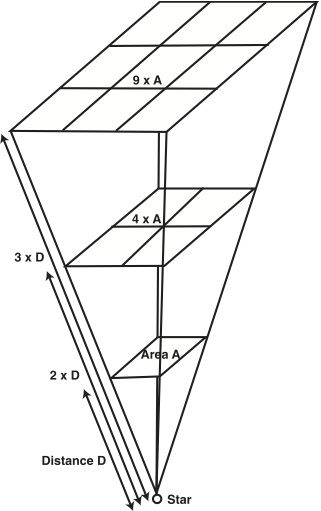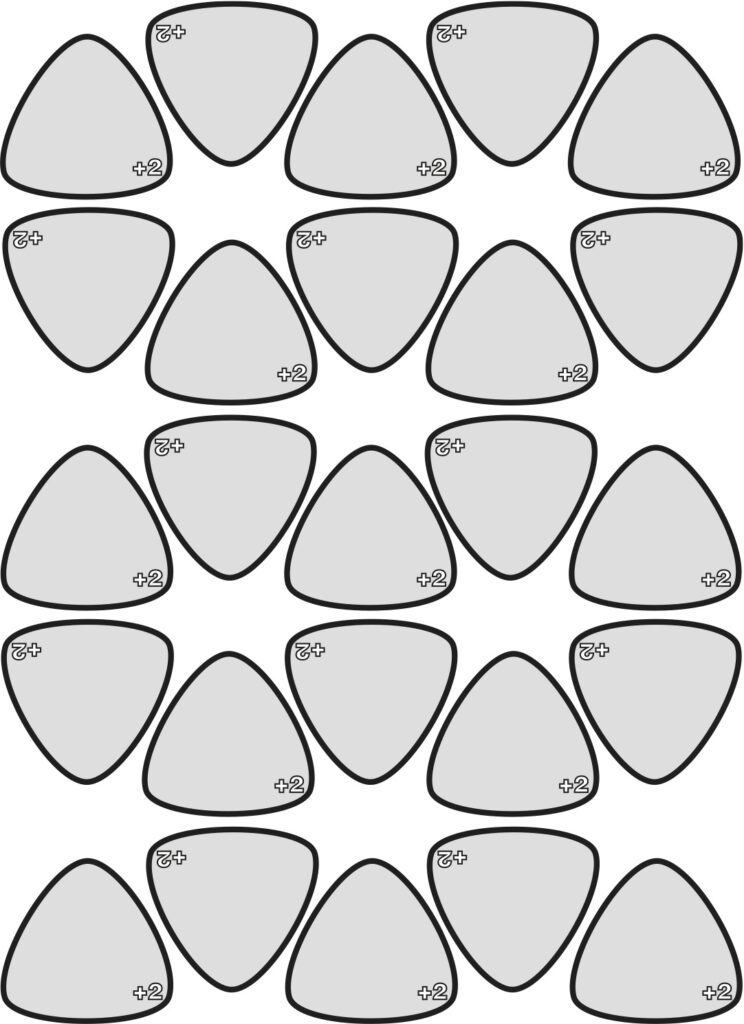Brightness of Stars
For really faraway stars, yet another clever distance finding method had to be found. The next trick to determine star distances was to compare their brightnesses.
If you observe two stars that put out the same amount of light and are equal distances away from you, the two stars appear to have the same brightness. However, if one of the stars is twice as far away from you, that star would appear much dimmer.
The light from a star appears to spread out in all directions, so that when you are twice as far, the light is one fourth as bright. When you are three times as far away, it is one ninth as bright, and so on.
Optional VISUAL: Inverse Square Law diagram.

Optional: for Older Groups It is not difficult to measure brightness of stars if you have the right instrument. I’m going to give you a brightness comparator so you can measure the brightness of a star. [Hand out “+1” brightness comparator to each student.] A star’s brightness is called its magnitude. One of the brightest stars we can see is named Vega and it is right here. [Point out Vega.] Vega is a magnitude 1 star. Magnitude numbers may seem a little strange to you at first, because the higher the magnitude number, the fainter the star. A magnitude 2 star is dimmer than a magnitude 1 star. The dimmest stars that you can see without a telescope are about magnitude 5 or 6, depending on how good your eyes are and how good the seeing conditions are. If you hold this piece of plastic in front of a star at arms length, it will cut the brightness of the star by 1 magnitude. Hold the plastic over Vega, which is normally magnitude 1, and Vega will look like a magnitude 2 star. In fact, if you hold the plastic over Vega, you can compare with other nearby stars and see if there are any magnitude 2 stars nearby. Do you see any magnitude 2 stars near Vega? If so, would you like to point one out for us?

[Have students point out magnitude two stars. Hand out “+2” brightness comparator.] This plastic cuts the apparent magnitude of a star by two magnitude numbers. If you hold it over a magnitude 1 star, it will look like a magnitude 3 star. Can you find any stars near Vega that are magnitude 3? Have students point out one or more magnitude 3 stars. These brightness comparators are very simple instruments. Astronomers use very precise instruments called photometers to measure the brightnesses of stars. The word photon means light and meter means measure.

